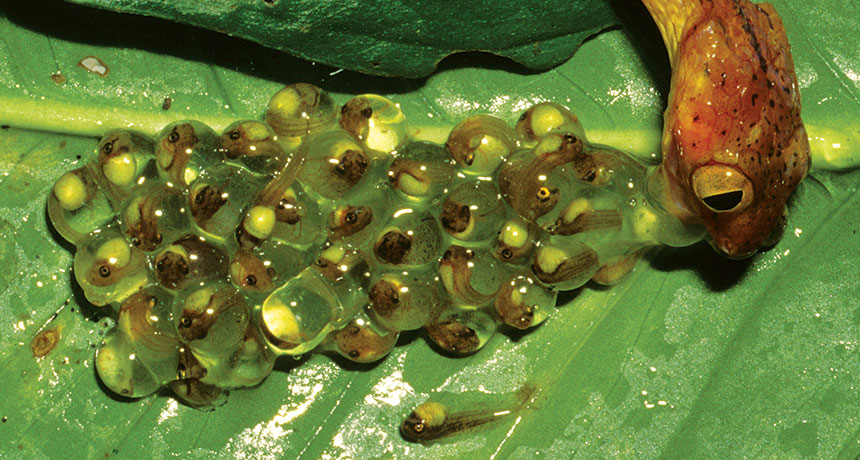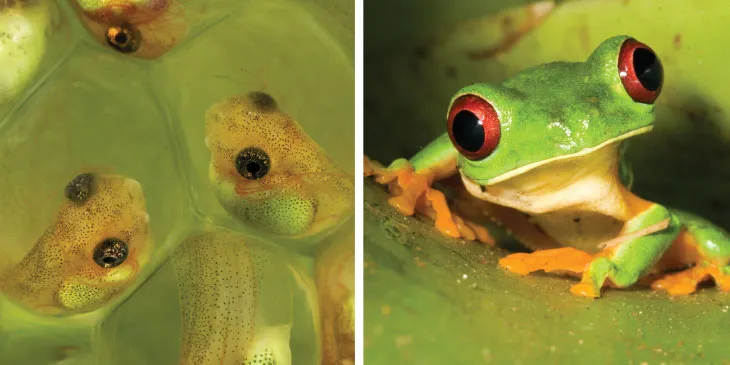How Houdini tadpoles escape certain death
Chemicals probably trigger a three-stage emergency early hatching process

RUN AWAY When predatory snakes take a bite out of clusters of unhatched red-eyed tree frog embryos, some manage to escape the slaughter by wriggling out of their eggs to safety.
Karen M. Warkentin







